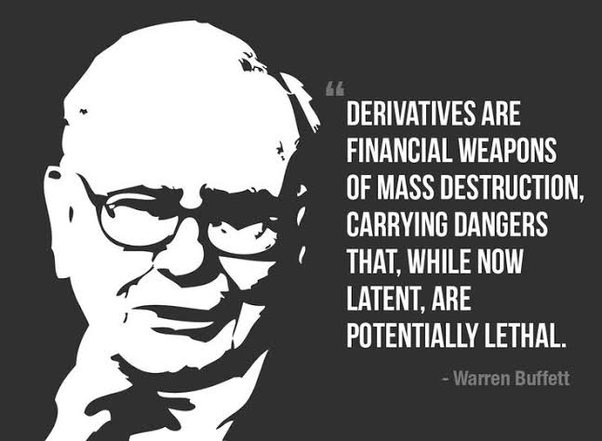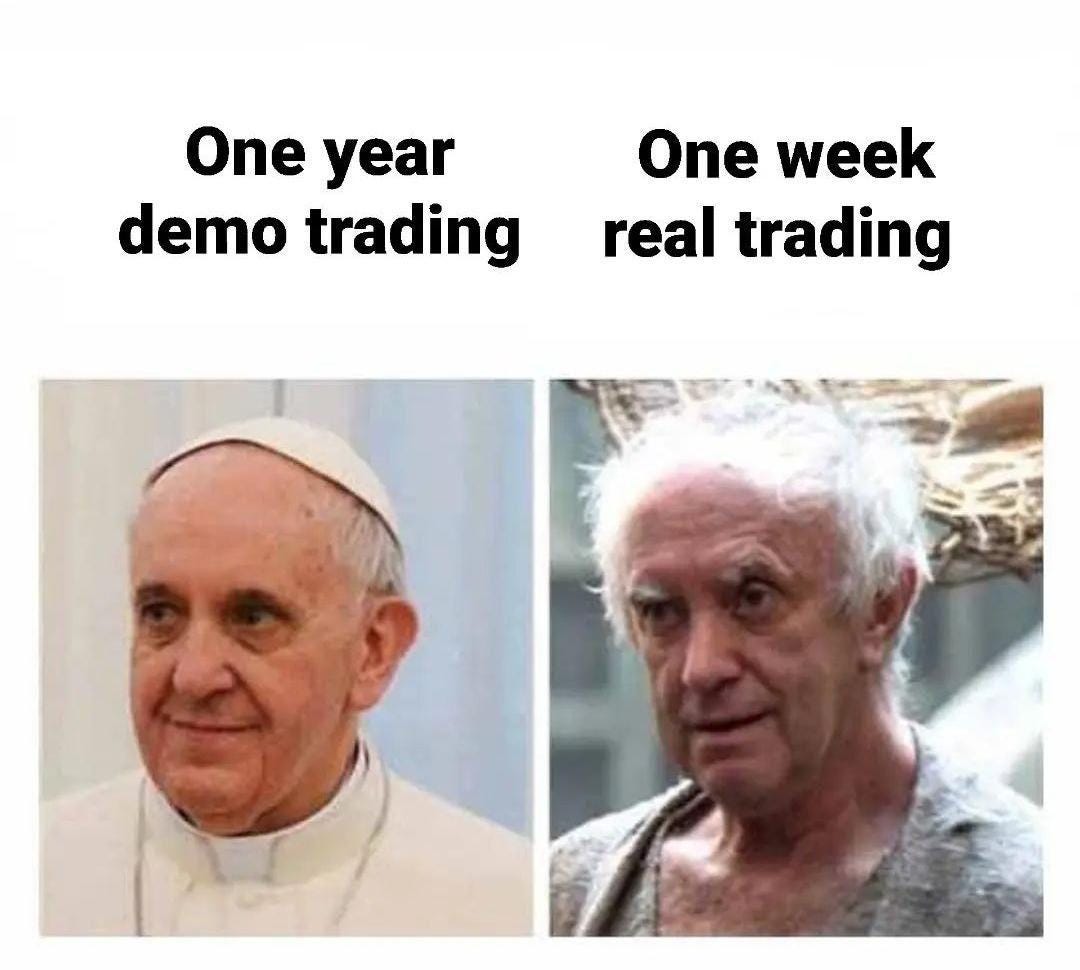Options: A Primer
"Financial weapons of mass destruction"
Many of my readers are likely to be very aware of options and their dynamics. For the uninitiated however, this post is going to be a quick write up on Options, what they are, how they operate and why it may not be (or may be) suitable to you.
Definition and Terminology
Options give the right but not the obligation to the option holder to either buy or sell a security at a particular price point within a specified time period. This means each option has three variables describing it:
Nature of the Option: Is it a right to Buy or a right to Sell. Right to buy is called a “CALL” option and a Right to Sell it is called a “PUT” option.
Price: The price at which the holder has the right to either buy or sell the security.
Expiry: The day on which the option is no more valid and becomes worthless if not exercised.
Depending on what security they apply, Options can be on individuals stocks (Stock Options or Equity Options), Indices (Index Options), ETFs, Commodities and so on..
Trading options is like being a magician: you either pull off an amazing trick and impress everyone, or you accidentally make your money disappear.
Additional terminology
If the security goes above (in case of “CALL”) or below (in case of “PUT”) the agreed upon price, then it is considered “In the Money” or ITM in short.
If not, the option is considered “Out of the Money” or OOM in short.
They are variations of these terminologies - Far ITM, Far OOM, Just ITM, Deep ITM, Just OOM and Deep OOM to signify the extent of being ITM/OOM.
Assignment: The event when a buyer/holder of option chooses to exercise their right to buy (in case of “CALL”) or sell (in case of “PUT”) the equity at the pre-agreed price. Naturally they will do so only if the option is “In the Money”/ITM, because if not, it is better for them to buy directly on the open market and not exercise this option.
Each option has a counterparty. When an option is issued, the buyer gets the right but not the obligation. However, the seller, or the counterparty takes upon themselves the obligation to serve the holder of the option that right. In essence, the seller of the options holds the risk, and the buyer of the option holds the upside on the risk. Given the asymmetric relation between the buyer and seller, a fee, called a premium, is paid by the buyer of the option to the seller.
Akin to Insurance
Think of it like insurance on a security. The insurer gives you the assurance that if the security is “In the Money”, then the insurer will make you good on the difference. For this, the insurer collects a premium up front. If the security is “Out of the Money” on the date of expiry, then the contract is nullified and both parties walk away. The buyer loses the premium, and the seller pockets it.
Size
Options are traded in lots, called a “Contract”. In many markets like the US, the contract lots are 100, but in some exchanges, like Hong Kong the option lots can vary to the extent that each ticker has a different lot size. The lot size is an important impediment in trading options. You need to be able to take sizeable positions to participate in this form of financial assets.
Given that options are powerful, and consequently, dangerous financial instruments, regulators expect brokers to ensure that somewhat knowledgeable people trade these. Hence, your broker is going to conduct a Customer Knowledge Assessment or “CKA” in short, and if it determines that you don’t have enough training/experience to trade these instruments, they will decline your requests for permission. This is the second impediment.
FAQ
Who can buy an option? Anyone with the right brokerage account and trading permissions and with enough money to pay for the option premium.
Who can sell an option? Surprisingly, anyone with the right brokerage account and trading permissions and with enough capital to cover the position.
Remember that if you sell a PUT option on $100 strike price for a $1 premium, then the buyer only needs $100 to buy the option, you need $10,000 to cover the position in the worst case. Brokers may or may not need you to physically set aside the $10,000 needed to cover the position. They might let you take a position on “margin” basis.
Options are created on the fly when a buyer and seller agrees on a price of an instrument.
But hold on, if I can sell an option, do I need to buy it first? No, you don’t. Since options are derivatives, there is no fixed supply of options going around. Options are created on the fly when a buyer and seller agrees on a price of an instrument. The number of options in existence is called “open interest” and can go up and down during the lifetime of an option. If you sell an option without holding it first, you create it, or add to the open interest. In such a scenario, your broker will carry your balance on this instrument in the negative (-100, -200 etc).
However, if you sell what you already hold, you are just trading existing options, with open interest remaining the same. When you buy back an option that you had previously sold (or were negative on), then the option is effectively cancelled and the open interest declines. When an option is exercised or assigned, the buyer gets the shares (in case of “CALL”) or sells the shares (in case of “PUT”) and the option itself is cancelled (or marked “ASSIGNED”) and the open interest again declines.
How to exert your trading position?
If you have a bullish thesis on a security, say something trading at $100 expected to go to $150, you can either buy a call option (risk of premium, unlimited upside) or sell a put option (risk of $100 position per unit of contract, but upside of the premium).
If you have a bearish thesis on a security, say something trading at $100 expected to go to $50, you can either buy a put option (risk of premium, upside up to $100) or sell a call option (unlimited risk, but upside of the premium).
As you can imagine, the combination of premium, strike price, spot price and length gives rise to near-infinite variations in how an investor can play with options to express themselves. This is precisely why options can be scary and dangerous to your portfolio. Use it wrongly, and you can get wiped out. Use it rightly and you can be richly rewarded.
How are option premiums priced?
Two Nobel Laureates came up with the Black Scholes formula, which is pretty much the universal way to apply a mathematical formula to pricing of options. Of course, like all other mathematical formula, it takes a couple of inputs that are subjective and different market participants can price those things differently, depending on what they think are the right inputs, but in highly liquid markets, options prices tend to stay in a pretty tight range as the market tends to have a consensus view on the parameters used. But there are ample less liquid markets where the spreads can be very wide and give the investor either an edge or a disadvantage.
Right then, this has been closed to 1000 words and everything I have to say about options is nowhere close to complete, so let me leave that for a future post, and wrap this one up.
Long Term Investors
With Coffee Can Investing being the primary area of focus of this blog, let’s talk about how options can be used in view of long term investing. In this context, there are two ways I look at using options:
I believe that the price is higher than what I would like it to be, and I am confident of accumulating position if the price went lower, but not bother buying if the price stayed the same or went up, then selling options with a medium term (6-24 months expiry) view is the best - because (a) if the security goes to where you want, you get to buy it at (price - premium) and hence slightly discounted to buying it at spot price and (b) if the security doesn’t go there, then you pocket the premium and move on. This was the basis of a previous post of mine.
I believe that the price is well below where it should be but I don’t want to deploy my full capital yet, then paying a premium to buy a medium term CALL option (6-24 months expiry). If the business re-rates and you are right, then you get to reap in the benefits and if it doesn’t, then you walk away having just lost your premium.
For both these trades, it is seductive to believe that we can do this all the time, for all the securities and be right. And you couldn’t be more wrong. Like in a casino, or an insurance company, the house is generally winning - i.e. the sellers of options are more likely to be collectively making money on any given day. Instead, the only way to be right is to apply Options trades only when you think something is severely mis-priced. Those events shouldn’t happen every day, but only fleetingly. If you are getting these ideas every day, instead of once every year, you are being seduced to gambling with options1.
I hope this was a useful primer to options. Use them sparingly and when you do, be extremely safe while trading them. Happy (or No) Options Trading!
To learn more about Options, head over to this next post:
Disclaimer: I am not your financial advisor and bear no fiduciary responsibility. This post is only for educational and entertainment purposes. Do your own due diligence before investing in any securities.
That’s not entirely true. There are strategies that depend on doing something daily too, but it is well outside the scope of this post.




